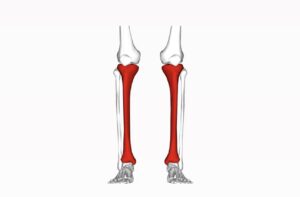Key Questions Addressed in the Article:
- What is sciatica, and how does it affect the body’s longest nerve?;
- What are the common misconceptions about sciatica, including its nature as a condition, its impact beyond the spine, and its unilateral vs. bilateral effects?;
- How can sciatica be treated and managed at home through exercises and pain management strategies?;
- What are the symptoms of sciatica, and how do they vary in intensity and duration?;
- Which exercises are recommended for strengthening and stretching to alleviate sciatica pain?;
- How do aerobic exercises and prevention tips contribute to managing sciatica and preventing its recurrence?;
- Why is seeking professional advice important for individuals experiencing persistent sciatica symptoms?
The sciatic nerve, recognized as the body’s longest nerve, traverses from the lower back, weaving through the hips and buttocks, and extends down the legs. Sciatica describes the prevalent discomfort associated with the sciatic nerve. This discomfort is typically a sharp, sudden pain that may strike unexpectedly, resulting from nerve irritation, inflammation, compression, or pinching, often due to a herniated disc among other triggers.
Common Misconceptions about Sciatica
- Misconception about Sciatica as a Condition: A prevalent misconception is that sciatica itself is a standalone medical condition. In reality, sciatica refers to a set of symptoms rather than a specific diagnosis. It signifies underlying issues affecting the sciatic nerve, which can stem from various causes, such as a herniated disk, spinal stenosis, or piriformis syndrome. Recognizing sciatica as a symptom rather than a disease is crucial for proper diagnosis and treatment;
- The Extent of Sciatica’s Impact Beyond the Spine: Contrary to the common belief that sciatica is synonymous with spinal pain, its effects can extend well beyond, manifesting along the entire length of the sciatic nerve. This means that individuals can experience symptoms like pain, numbness, and tingling in the legs and feet, even without back pain. This highlights the sciatic nerve’s long path from the lower back, through the buttocks, down to the legs, and underscores the varied presentation of symptoms;
- Sciatica’s Unilateral vs. Bilateral Effects: Another widespread assumption is that sciatica exclusively affects one side of the body. While it’s true that sciatica most commonly presents on one side, there are instances where it can cause symptoms on both sides simultaneously. This bilateral manifestation can occur when the nerve roots on both sides of the spine are compressed or irritated. However, bilateral sciatica is less common and might suggest a more severe underlying condition, emphasizing the importance of comprehensive evaluation and management.
Understanding these nuances about sciatica is essential for demystifying the condition and guiding individuals towards seeking appropriate care and interventions. It highlights the complexity of nerve-related symptoms and the importance of individualized diagnosis and treatment strategies.
Treatment and Pain Management
Sciatica is primarily managed through rest, ice packs, exercise, stretching, and physical therapy, with surgery reserved for chronic cases. Incorporating stretching and mild exercise not only aids in healing but also in alleviating sciatica-related pain. This section introduces a broad overview of sciatica and six straightforward home rehabilitation exercises to foster recovery.
Symptoms of Sciatica
Individuals with sciatica might experience a variety of symptoms that can vary in intensity and duration, including:
- Sharp, sudden pain anywhere from the back to the legs: This pain is often described as a severe, shooting discomfort that can occur unexpectedly in the lower back and extend down through the buttocks to the legs, significantly impacting mobility and quality of life;
- Gradually worsening pain along the same path: Initially, the pain may be mild, but it can progressively intensify along the nerve’s pathway, from the lower back through the buttocks and down the leg, often exacerbated by prolonged sitting or standing;
- Numbness in these areas: A lack of sensation or a feeling of weakness may develop in the affected leg or foot, potentially leading to difficulties in movement control and a heightened risk of injury due to decreased awareness of limb positioning;
- Tingling sensations: These are often described as pins-and-needles feelings that can affect the legs or feet, indicating a disruption in nerve function and signaling, which can be both uncomfortable and a sign of underlying nerve damage;
- Increased pain during certain movements: Activities such as twisting, lifting, or bending may trigger or exacerbate the sciatic pain, reflecting the nerve’s heightened sensitivity and the mechanical stress placed upon it during these motions;
- Difficulty in bending the knees, closing the thighs, or pointing the feet: Such motor impairments can signify the sciatica’s impact on specific nerve branches that control muscle movement in the lower limbs, leading to reduced mobility and challenges in performing daily activities efficiently.
Exercises for Strengthening and Stretching
Lower Trunk Rotations and Opposite Arm and Leg Extensions aim to enhance lower back and core strength, involving gentle stretches and balanced extensions.
Bridge Exercises focus on strengthening the lower back and glutes, promoting proper alignment without stressing the back.
For relieving sciatica pain, Lying Knee to Shoulder Stretches, Standing Hamstring Stretches, and Standing Piriformis Stretches are recommended to gently stretch and relax the muscles that could be impacting the sciatic nerve.

Aerobic Exercises and Prevention Tips
Incorporating aerobic exercises into one’s routine can significantly benefit those suffering from sciatica, depending on their specific condition and tolerance levels. Activities like walking and water aerobics are particularly advantageous as they promote cardiovascular health, enhance blood circulation, and facilitate the gentle stretching of the back and leg muscles without placing undue stress on the spine. However, it’s imperative to undertake such exercises under the guidance of a healthcare professional to ensure they are safe and effective based on the individual’s health status and sciatica severity.
Preventative strategies play a critical role in mitigating the risk of developing sciatica or experiencing a recurrence. Staying physically active and engaging in regular exercise helps strengthen the back and core muscles, supporting the spine more effectively. Practicing proper posture, especially while sitting for prolonged periods, reduces the strain on the lower back, diminishing the chances of nerve compression. Maintaining a healthy BMI (Body Mass Index) is essential, as excess weight can increase the pressure on the spine and the sciatic nerve. Adjusting walking strides to ensure they are not overly long can also help in preventing sciatic pain by minimizing the stress on the lower back and hips.
Furthermore, incorporating yoga into one’s lifestyle can be incredibly beneficial. Yoga promotes spine alignment, flexibility, and muscle strength, all of which are vital for reducing the risk of sciatica. Through various poses and stretches, yoga can alleviate tension in the areas surrounding the sciatic nerve, offering relief from discomfort and enhancing overall well-being. As with aerobic exercises, it is advisable to practice yoga under the guidance of an instructor who is aware of your health limitations to ensure that the poses are performed correctly and safely.
Seeking Professional Advice
For persistent symptoms, consulting a podiatrist who specializes in lower body conditions can provide targeted advice and treatment plans, ensuring a tailored approach to managing and overcoming sciatica.
Through understanding, targeted exercises, and preventive care, individuals can navigate the challenges of sciatica, promoting a healthier, more comfortable lifestyle.
Overall
In conclusion, sciatica, characterized by pain along the path of the sciatic nerve, encompasses a spectrum of symptoms that can disrupt daily life. This condition, often misunderstood, demands a comprehensive approach to treatment and prevention. Through debunking common myths, it becomes clear that sciatica is not a condition but a symptom of underlying nerve distress, capable of manifesting anywhere from the lower back down to the legs, and potentially affecting both sides of the body. The key to managing sciatica lies in a balanced regimen of rest, therapeutic exercises, stretching, and when necessary, medical intervention. Rehabilitation exercises such as lower trunk rotations, opposite arm and leg extensions, and specific stretches provide significant relief and are essential components of a holistic recovery plan. Moreover, preventative measures like maintaining an active lifestyle, adhering to proper posture, and practicing yoga play pivotal roles in avoiding the onset of sciatica. It’s crucial for individuals experiencing persistent or severe symptoms to seek professional advice, ensuring a correct diagnosis and an effective treatment plan tailored to their specific needs. Ultimately, understanding and addressing sciatica with a proactive and informed approach can lead to improved well-being and a reduction in the risk of recurrence.
FAQs:
Yes, in many cases, sciatica can resolve itself over time without formal treatment. The body can often heal the underlying issue causing the nerve irritation, especially with mild sciatica. However, adopting lifestyle changes, such as improving posture, incorporating gentle exercises, and using over-the-counter pain relief, can aid in faster recovery. Despite this, persistent or severe cases may require professional medical intervention.
The duration of sciatica pain varies significantly among individuals, depending on the underlying cause and the severity of the condition. For some, the discomfort may diminish within a few weeks, while others might experience symptoms for several months. Implementing effective management strategies, including physical therapy and exercises, can help expedite recovery. It’s important to consult a healthcare provider for a personalized assessment and treatment plan.
Yes, individuals suffering from sciatica should avoid exercises that can exacerbate their condition, including heavy lifting, full-body squats, and any activities that involve twisting the spine or bending forward from the waist without proper support. It’s advisable to focus on low-impact exercises and stretches that do not strain the lower back or sciatic nerve. Engaging in high-impact sports or rigorous physical activities that jolt or compress the spine can also be detrimental, potentially aggravating the sciatic nerve irritation. Activities like running on hard surfaces, performing high-intensity interval training without proper form, or engaging in contact sports can increase the risk of sciatic nerve pain flaring up. Consulting with a physical therapist can provide guidance on safe exercises tailored to your specific situation. A therapist can assess your condition and recommend a regimen that strengthens the core and gluteal muscles, improves posture, and enhances flexibility without putting undue pressure on the sciatic nerve. This personalized approach helps in managing symptoms effectively while promoting overall spinal health.
While sciatica most commonly affects one side of the body, it is possible, though less common, for it to impact both legs simultaneously. This can occur when the underlying condition, such as a central spinal disc herniation, exerts pressure on the nerve roots serving both legs. Bilateral sciatica may indicate a more severe spinal issue, requiring immediate and specialized medical intervention to prevent further nerve damage and alleviate symptoms. Experiencing sciatica in both legs often presents unique challenges, including more significant pain, reduced mobility, and potential neurological symptoms such as weakness or numbness in the lower extremities. It’s crucial to seek medical advice if you experience symptoms in both legs, as this may necessitate a comprehensive diagnostic evaluation, including imaging studies like MRI, to accurately diagnose the cause and determine the best course of treatment. Treatment may involve a combination of medication, physical therapy, and possibly surgical intervention to relieve pressure on the nerve roots. Early and effective management is essential for improving outcomes and enhancing quality of life for those affected by bilateral sciatica.


